The financial sector has been key in combating financial crime and terrorist financing through anti-money laundering (AML) initiatives. As digital assets become more prevalent, banks and other financial institutions realize they must adapt their existing AML policies to address these new assets, including the Travel Rule. This requires developing a new set of capabilities to effectively manage and mitigate associated risks.
Understanding AML and the Travel Rule
AML involves a set of regulations and procedures aimed at preventing income generation through illegal means. It's vital for maintaining the integrity of financial systems and preventing illicit actions. One key part of AML is the Travel Rule, which is backed by the Financial Action Task Force (FATF). This rule requires virtual asset providers to share client information during wire transfers, ensuring transparency and aligning with global efforts to combat money laundering and terrorism financing.
In this article, we dive into why the Travel Rule and AML are so crucial for financial institutions. We'll look at the challenges these regulations present and offer practical tips for implementing effective processes and controls.
Impact of the Travel Rule on AML compliance for financial institutions and VASPs
The Travel Rule has significant implications for AML compliance across the financial sector, affecting both traditional financial institutions and Virtual Asset Service Providers (VASPs).
At its core, the Travel Rule requires that detailed information about the client and the beneficial owner accompany wire transfers. This is particularly important for VASPs because it allows them to cross-check the sender's name against sanction lists and thoroughly verify the beneficial owner's details. If any discrepancies are found during this process, immediate and appropriate actions must be taken, which could include returning the payment.
What does the Crypto Travel Rule mean for VASPs?
The Crypto Travel Rule means that virtual asset service providers (VASPs), such as banks, custodial solutions, exchanges, and other financial services, have to clearly identify the sources and destinations of crypto transactions when they exceed a certain threshold.
Here’s what this rule means in practice:
- For any crypto transaction over a specific amount, the customer’s personal information must be included.
- VASPs are required to conduct sanction screenings on the counterparty customer and perform due diligence on the counterparty VASP.
Contrary to common misconceptions, the Travel Rule is not just for cryptocurrency transfers. It originally applied to any wire transfer, including cash. The FATF has now extended its scope to include virtual assets as well. This broad application highlights the importance of having consistent compliance measures across all types of financial transactions.
Data collection requirements for Virtual Asset transfers
The Financial Action Task Force (FATF) advises that countries should adopt a de minimis threshold of $1,000 USD/EUR for virtual asset (VA) transfers. Transactions below this threshold are subject to fewer regulatory requirements compared to those exceeding it.
For VA transfers under this threshold, Virtual Asset Service Providers (VASPs) need to gather some basic info:
- The VA wallet address for each party or a unique transaction reference number.
- The names of both the sender and the recipient.
For transfers over the $1,000 threshold, the requirements get a bit more detailed:
- The originator’s name.
- The account number the originator used for the transaction.
- One of the following for unique identification: the originator’s address, customer ID number, national identity number, or date and place of birth.
- The beneficiary’s name.
- The account number the beneficiary used for the transaction.
Still, the FATF doesn’t mandate any specific method or Regulatory Technology service for sharing this data. This means businesses have the flexibility to choose whichever solution fits them best.
Implementation challenges for Virtual Assets under the Travel Rule
Ensuring consistent implementation of the Travel Rule involves several challenges, both regulatory and technological:
- Regulation: The FATF issues recommendations, which are then interpreted and enforced by local authorities. This results in diverse regulatory frameworks, causing variations in implementation timelines across different jurisdictions. Understanding how each local authority interprets and adapts FATF recommendations is key.
- Interoperability: Another significant challenge is the lack of a global standard for Travel Rule implementation. While multiple solutions exist, the absence of a universally accepted standard poses challenges for interoperability. The industry needs a common approach to ensure smooth communication and compliance across different systems.
Role of KYT providers
Know Your Transaction (KYT) providers play a crucial role in helping financial institutions comply with AML regulations and the Travel Rule. Companies like Chainalysis, Elliptic, Lukka, Scorechain, and TRM Labs offer advanced tools and services to monitor transactions, detect suspicious activity, and ensure regulatory compliance. By leveraging KYT solutions, financial institutions can enhance their ability to identify and mitigate risks associated with digital assets.
Link between "Proof of Ownership" and the Travel Rule
Regulators may enhance Travel Rule requirements by imposing additional measures to prove ownership of external wallets in blockchain transactions. Technical solutions such as challenge signatures, micro-transactions, time-boxing, and blockchain messages are needed to meet these augmented regulatory expectations.
How to reconcile AML compliance with operational efficiency, data security, and user privacy
Balancing AML compliance, operational efficiency, and data security is challenging. It requires:
- Robust encryption and secure data sharing: Strong encryption and secure data-sharing mechanisms are essential.
- Respecting user privacy: Ensuring that user privacy preferences are respected within Travel Rule processes.
- Selecting the right custody solution: The chosen digital asset custody solution must ensure regulatory compliance, enhance operational efficiency, and protect user data and privacy.
Prepare for the Digital Operational Resilience Act (DORA)
As financial institutions work to balance AML compliance, operational efficiency, data security, and user privacy, they must also contend with growing cyber threats and regulatory demands. The Digital Operational Resilience Act (DORA) is designed to tackle these issues, aiming to ensure the highest level of digital resilience for regulated financial entities within the European Union.
This whitepaper is your comprehensive guide to understanding and implementing DORA. Inside, you will:
- Gain a thorough understanding of DORA’s requirements to protect against cyber threats.
- Stay informed about DORA’s scope and timeline to ensure you meet regulatory standards.
- Discover how to implement DORA’s components to enhance digital infrastructure and customer trust.
Download now to prepare your institution for DORA.
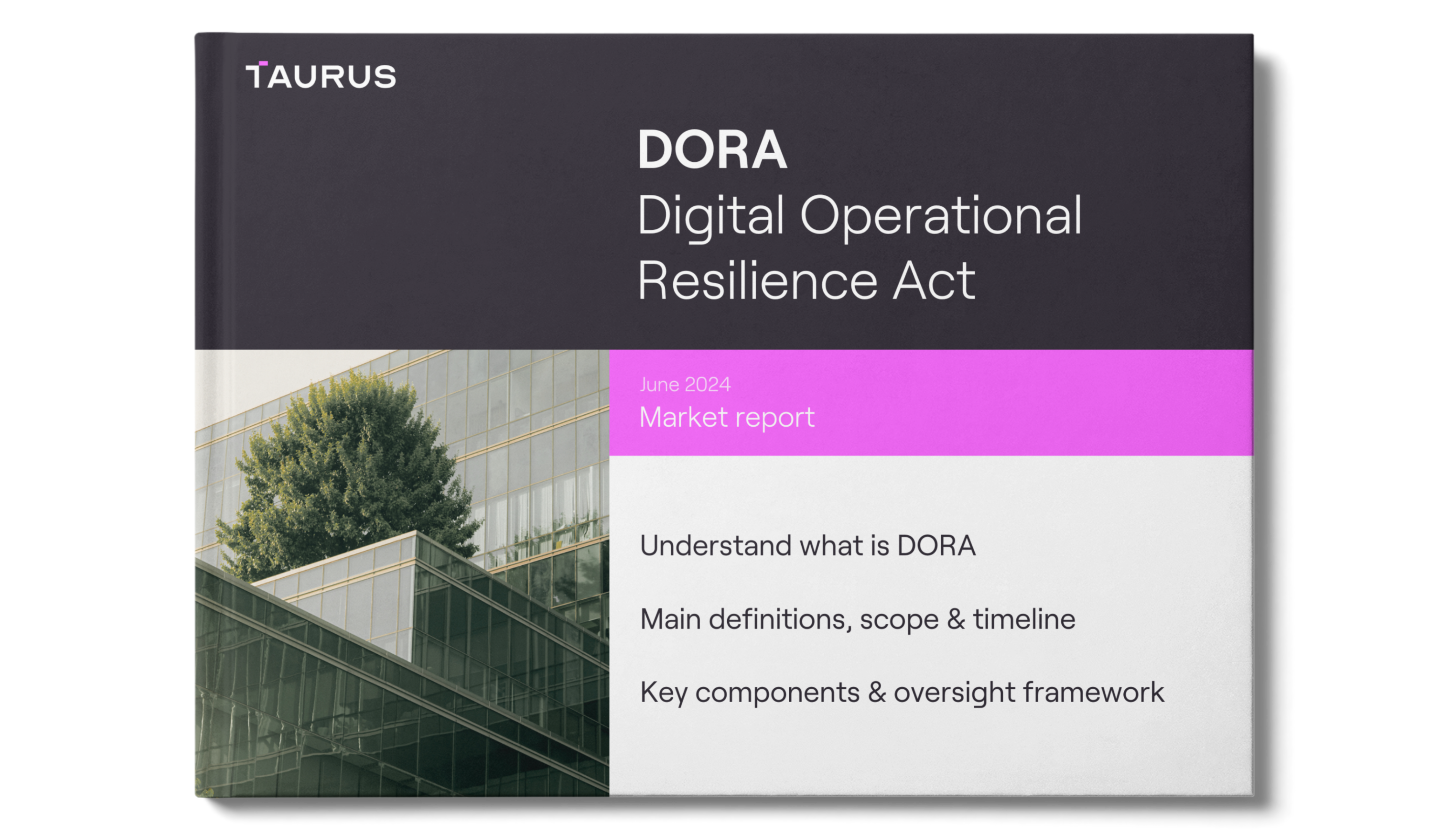

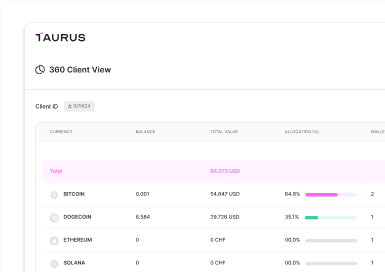
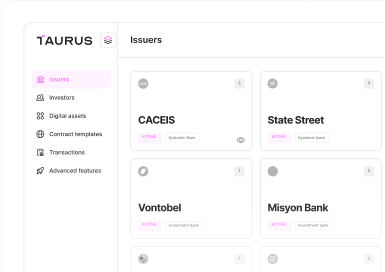
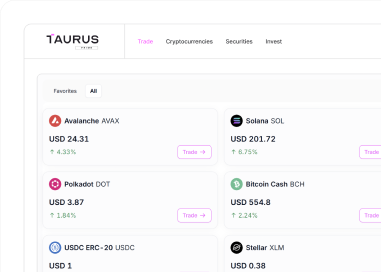
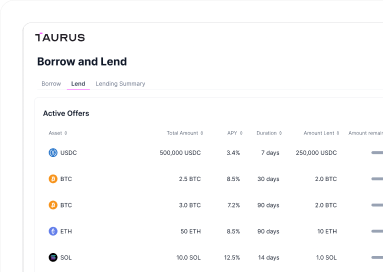






 Taurus-PROTECT Custody
Taurus-PROTECT Custody
 Taurus-CAPITAL Tokenization
Taurus-CAPITAL Tokenization
 Taurus-PRIME Trading
Taurus-PRIME Trading
 Taurus-NETWORK Collateral
Taurus-NETWORK Collateral
